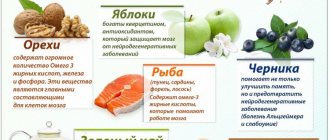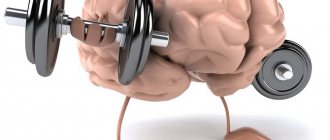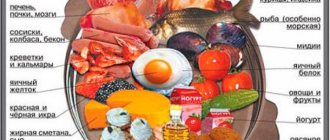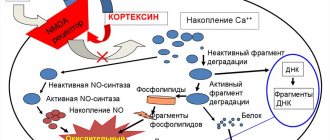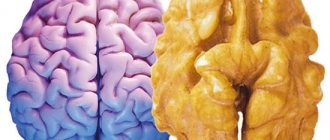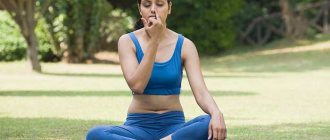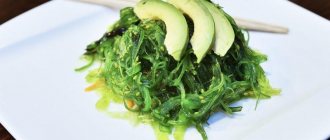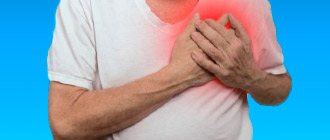- High results, no side effects
- Treatment without pills and surgeries
- Initial consultation with a doctor is FREE
Tibetan medicine considers vegetative-vascular dystonia as a disorder of the Wind system. It is responsible for nervous regulation and the cardiovascular system. Therefore, the symptoms of VSD are associated primarily with vascular and nervous (autonomic) disorders.
For disorders of the Wind system, Tibetan medicine recommends oily, sweet foods. This means that it is better to forget about low-calorie diets based on raw vegetables, herbs and fruits. These products have a cooling effect, and the Wind system has the nature of cold. Therefore, they aggravate the symptoms of vegetative-vascular disorder and add new ones to them - insomnia, irritability, anxiety. Low-calorie diets and raw food diets for VSD can provoke the development of neuroses or mental disorders, as well as complications in the form of panic attacks.
Go Take the test and get a BONUS - a discount on treatment in our clinic Take the test
Fats
Oily foods are foods that are high in fat. But not all fats are equally beneficial for VSD. The best butter is ghee. This is a universally useful product for any disorders of the Wind system, so it should take a leading place in the diet. Butter is less healthy. Sunflower and sesame oils warm, so they are completely acceptable. Olive is cooling, but good for the nervous system. But it is better to exclude corn and rapeseed oils.
Blood vessels are connected not only with the Wind system, but also with the Mucus system, and it does not like animal fats. Therefore, they should be consumed with caution (although fatty meat is not prohibited). And under no circumstances should you drink animal fats with chilled drinks.
Physical activity for VSD
Vegetative-vascular dystonia and sports are completely compatible concepts, although it is still not advisable to engage in some sports. Doctors are also wary of recommendations to continue professional sports training with VSD. But moderate physical activity is even welcome, because it increases the effectiveness of therapy. Let's take a closer look at which sports are not dangerous for VSD, and which sports activities should be continued with caution.
- Allowed
With VSD, running, swimming, step aerobics, morning exercises, yoga, and badminton are among the sports that are allowed.
- Forbidden
Martial arts, weightlifting, powerlifting, arm wrestling, kettlebell lifting, bodybuilding, discus throwing are on the black list for the diagnosis of VSD.
Chess is also prohibited for people with VSD. The whole point here is not physical, but emotional stress. In addition, a chess player can sit in one position for hours. A surge of emotions against the background of a lack of muscle load can lead to a hypertensive crisis during VSD.
If you have vascular dystonia and you are going to the gym, here is what you need to remember. The entire lifestyle is of great importance: with VSD, you need a correct daily routine, including at least seven hours of sleep and good nutrition. At the same time, there is no overload on the body. Moreover, it is necessary to forget about overloads during training. When playing sports, it is important not to forget about your pulse and blood pressure. However, do not control them manically, otherwise you will develop neurosis and the effect of the stress will decrease.
Best Sports Workouts
Let's take a closer look at what sports are recommended for VSD.
The best form of physical activity for VSD is running. It uses more than 80% of the muscles, the whole body works. All its systems and internal organs are better supplied with oxygen. If you approach the process correctly, think through a plan for regular training to run, gradually increasing the load, you can easily reduce the symptoms of VSD.
This is because with a gradual increase in loads, the heart muscle will slowly learn to pump a larger volume of blood. The functioning of the brain will also improve, which will begin to receive more oxygen, thought processes will accelerate, and the consequences of neurosis, psychosis and depression will go away. All this will help you more easily survive stress during VSD. With all its advantages, running has one more huge advantage - it is the most accessible sport and in order to practice it, you do not need subscriptions to expensive gyms or expensive equipment. All you need is sneakers and a desire to play sports.
Fitness is an effective way to maintain good physical shape. It represents a set of measures that will help strengthen all muscle groups, the immune and cardiovascular systems, lose weight, and maintain tone. With the help of fitness, you will become more resilient, strong and flexible, rejuvenate your body, and forget about stress and irritability. With the help of fitness, you can also reduce the symptoms of VSD.
Horseback riding, cycling and skiing
Equestrian sports and cycling also have no restrictions in the presence of VSD. But we must remember about the smoothness of movements. In winter, swap your horse or bicycle for skis or skates.
The autonomic system is part of the central nervous system and is responsible for the functionality of all internal organs and their interaction within the system. She is responsible for the following functions:
- ensuring the interaction of reflexes and brain signals;
- perception of the environment, relaxation or tension depending on the factors affecting the psyche;
- the first solution is to activate the parasympathetic department of the autonomic nervous system: nutrition, rest, sleep;
- the second is the sympathetic department: defense and attack of the body.
The ANS consists of two departments, each of which is responsible for its own functions. One allows the body to relax, the other allows the body to tense up.
VSD and charging
To prepare the body of a patient with dystonia for regular heavy exercise, it is necessary to simply do exercises at home for the first month. Just 15–20 minutes daily will give positive results within a month. For hypothalamic dysfunction, it is recommended to perform the following set of exercises:
- Side bends from a standing position. Help strengthen the oblique abdominal muscles and increase blood flow.
- Abdominal exercises from a lying position. Strengthens the spine and abdominal muscles.
- Stand in side and horizontal plank for 1 minute.
- Exercise "bicycle". Increases vascular tone in the legs and improves venous blood flow from the lower extremities to the heart.
- Stretching exercises.
- Lifting dumbbells with your hands.
- Pushups.
A competent approach to organizing physical activity for patients with dystonia is a direct path to improving overall well-being. Along with physical hardening comes optimism and self-confidence.
Sports against the backdrop of VSD
VSD refers to pathological signs associated with impaired functioning of autonomic reactions. Their list can be very extensive. We list the most common ones found in the clinic:
- headache;
- fluctuations in blood pressure and temperature;
- emotional lability;
- excessive sweating (hyperhidrosis);
- periodic and reversible sensitivity disorders (paresthesia);
- chilliness, or periodic feeling of heat;
- redness or paleness of the skin;
- panic attacks, or “vegetative storms”, which are accompanied by the fear of death.
Sport with such symptoms is a controversial issue.
Some doctors try to convince patients that physical activity is undesirable for them and can aggravate the condition.
But there are exercises to normalize the functioning of blood vessels. Therefore, VSD and sport are often interconnected. And in the end, life is movement. And for functional disorders, it is quite possible to choose the right exercises that will not cause unpleasant symptoms.
Recommended types of exercise
When making a diagnosis related to dysfunction of the autonomic system, you need to start every day with physical activity. Immediately after waking up, you need to perform several correctly selected exercises aimed at:
- to strengthen the heart and blood vessels;
- to work with breathing;
- to develop coordination;
- to improve muscle stretching.
Each exercise must be performed slowly, without unnecessary effort, trying to feel muscle pleasure. For concomitant diseases, a set of exercises is selected taking into account not to cause harm. If you have symptoms of cardiovascular diseases such as high or low blood pressure, you must exclude:
- sudden movements;
- increased cardio loads that make you short of breath;
- jumping and shaking, etc.
General recommendations
If the vegetative-vascular system is disordered, you can choose different sports, with the exception of those that cause a heartbeat above normal, shocks and concussions. This could be: Nordic walking, swimming, gentle jogging, cross-country skiing. Training should be regular and moderate. But with VSD, physical therapy (physical therapy) must be included in the adaptation course. The advantages of this type of physical activity are that they:
- performed from a standing or lying position;
- aimed at all muscle groups;
- train breathing and develop coordination and flexibility.
Physical therapy for VSD should be performed regularly. It is better to exercise in the morning, an hour after a light breakfast, an hour before a second breakfast or snack. Exercises should be selected in such a way that strength loads, stretching and relaxation movements alternate. They should be performed slowly, until you feel slightly tired, excluding overwork.
For those who have a diagnosis of VSD, moderate and quiet exercise in the gym is useful, but only in cases where there is a tendency to hypotension: if you have high blood pressure, you cannot exercise on exercise machines.
When putting together a complex using simulators, you must definitely select exercises to improve or correct your posture. Most often, VSD develops in people with poorly developed back muscles. The condition of the spine causes incorrect position of the internal organs, their normal blood supply and function deteriorate. All this aggravates the condition of the patient, who definitely needs to strengthen his back.
Swimming with VSD
Swimming for vegetative-vascular disorders is necessary. This is one of the most gentle and at the same time effective sports. The main goal of water exercises is to develop general endurance and at the same time normalize the functioning of the central nervous system. Calm swimming, without racing for distance and speed, will bring benefits.
Compliance with the contraindications noted by experts for people with VSD can significantly improve the quality of life of the latter and save them from exacerbations of the negative symptoms of this disease.
Vegetables
Most vegetables have a sweet taste and are generally useful for VSD, but only after heat treatment and with the addition of ghee. These are primarily carrots, pumpkins, and potatoes.
The best oily product for VSD is fatty fish. Any, but especially sea. It could be salmon, mackerel or herring. You need to eat oily fish regularly. It warms (useful for Wind, Mucus), has a sweet taste and is ideal for nutrition in case of vegetative-vascular dystonia in any form - boiled, stewed, baked, fried. But not in dried form, since dry, light foods are harmful to the Wind.
Prescription of diet therapy for diseases of the peripheral nervous system
For patients with diseases of the peripheral nervous system, several options for a standard diet are recommended (Table 1).
Table 1. chemical composition and energy value of the diet for patients with diseases of the peripheral nervous system
| Standard diet option | Proteins, g | Fats, g | Carbohydrates, g | Energy value, kcal |
| The main version of the standard diet (OVD) | 85–90 | 70–80 | 300–330 | 2170–2400 |
| Option of a standard reduced calorie diet (NCD) | 70–80 | 60–70 | 130–150 | 1340–1550 |
Cereals
Buckwheat is light and cold, so it is not the best choice of cereals for VSD. The best choice would be oatmeal. Even millet porridge is preferable to buckwheat. However, buckwheat can be well seasoned with melted butter and warming foods can be added to it - fried onions, mushrooms, boiled eggs, pepper. In this case, you will get a useful product.
Rice is also a useful cereal. It has a neutral effect, but harmonizes the body's systems and has a positive effect on vegetative-vascular disorders. You can safely use it, in any quantity, but don’t forget to flavor it well with melted butter! Dry, hard, undercooked rice without oil is harmful for VSD.
Diet for cardiac patients
1.FATS: Recommended: Limit intake of all fats.
Limited intake: Butter and margarine containing polyunsaturated fatty acids in large quantities (in Russia, “Zdorovye” margarine). Oil: sunflower, corn, saffron, soybean, olive, cottonseed.
Not recommended : Oil and fat obtained during frying meat and meat products, lard, coconut oil. Margarines without a high unsaturated fat content label. Melted or vegetable oil of unknown origin. Hydrogenated oils and margarines.
2. MEAT: Recommended: Chicken, turkey, veal, rabbit, game (wild ducks, partridges, hare)
Limited intake: Lean beef, bacon, ham, lean ground beef, liver and kidney.
Not recommended : Meat with visible fat, lamb brisket and ribs, pork (meat from the belly area), bacon with layers of fat, sausages, sausages, salami, pate, scrambled eggs with meat, duck, goose, meat pastes, poultry skin.
3. DAIRY PRODUCTS : Recommended: Skim milk, low-fat cheeses (for example, pressed cottage cheese), skim milk cheese, curdled milk cheese. Low fat kefir. Egg white.
Limited intake: Semi-skimmed milk, medium-fat cheeses (Eden, Camembert). Processed, spreadable cheeses. 1-3 eggs per week. Half-fat cheeses.
Not recommended : Unskimmed milk, condensed and concentrated milk, cream, whipped cream. Fat cheeses: Cheddar, Cheshire, etc. Cream cheeses. Fat kefir.
4. FISH : Recommended: all “white” fish: cod, hoddock, flounder. Fatty fish: herring, mackerel, sardines, tuna, salmon (chum salmon, pink salmon, salmon)
Limited intake: Fish cooked in suitable oil. Shellfish. Marine crustaceans.
Not recommended : Fish roe.
5.FRUITS/VEGETABLES : Recommended: All fresh and frozen vegetables, peas, beans, olives. Dried legumes: peas, beans, lentils. Boiled potatoes (peeled or “in their jacket” (eating the skin whenever possible). Fresh fruits, unsweetened canned fruits, walnuts, chestnuts.
Limited intake: Fried, stewed potatoes cooked in suitable oil. Fruits in syrup. Candied fruits. Almond. Hazelnut.
Not recommended : Fried, stewed potatoes (if they are cooked in unsuitable oil). Potato chips, crispy potatoes.
6. CEREALS : Recommended: wholemeal flour (unsifted), bread made from it, unground (whole) cereals, oatmeal, wheat flour. Oatmeal. Unpolished rice and rice paste. Rusks cooked in the oven. Oat cookies. Yeast-free bread.
Limited intake: White flour, white bread, sweet breakfast cereals, polished (white) rice and rice pasta. An ordinary semi-sweet biscuit. Biscuit made with water.
Not recommended: Cakes. Biscuits with spicy cheese. Confectionery products (cookies, cakes) purchased in a store.
7.BAKING : Recommended: Low-fat puddings: jelly, sherbet, skim milk puddings, low-fat relishes (purees).
Restricted intake: cakes, confectionery, biscuits and condiments prepared with suitable butter or margarine. Homemade snacks with unsaturated fats.
Not recommended : Cakes, puddings, biscuits containing saturated fat. Dumplings, puddings made with fat. Seasonings with cream and butter. All store bought puddings and condiments. Snacks cooked in “boiling” oil (fried side dishes). Milk ice cream.
8. DRINKS : Recommended: Tea, coffee, mineral water, unsweetened drinks, fruit juices without sugar. "Clean" soups. Homemade vegetable soups. Low alcohol beer.
Limited intake: Sugary drinks, low malt drinks. low fat liquid chocolate (rare). Batch soups, meat soups. Alcohol.
Not recommended : Irish coffee (coffee with cream and alcohol), fat-rich malt drinks, chocolate, creamy soups.
9.CANNED CONSTRUCTIONS, SWEETS : Recommended: “Clean” marinades. Sweets without sugar: saccharin tablets or liquid sweets with aspartame.
Limited intake: Sweet marinades and seasonings (from fruits, peppers), which are served with cold meat (curry). Marmalades. Honey. Syrups. Marzipan. Peanut butter. Lemon curd. Hot sweets. Marshmallows, mints, sugar, sorbitol, glucose, fructose.
Not recommended : Chocolate creams, pie fillings made with animal fats. Taffy. Sweets. Cream obtained by whipping butter and sugar. Chocolate.
10. REST: Recommended: herbs, spices, mustard, pepper, vinegar. Low-fat condiments: lemon, yogurt.
Limited intake: Meat and fish spreads, low-calorie cream and mayonnaise. Bottled sauces. French seasonings. Soy sauce.
Not Recommended : Regular salad cream, mayonnaise, cream or dressings containing cream cheese.
EXPLANATIONS FOR DIETARY RECOMMENDATIONS
“Recommended” foods are those that are low in fat and/or high in pectin fiber.
The foods listed in the "limit intake" section contain polyunsaturated fats or small amounts of saturated fat. If your diet contains a small amount of fat, these foods are allowed to a limited extent. For example: “red” meat (limited intake) - i.e. no more than three times a week, medium-fat cheeses and fish spreads - once a week, or homemade cookies, biscuits, confectionery products prepared using suitable (containing polyunsaturated fats) margarine or oils - twice a week, or fried potatoes (baked) cooked in the appropriate oil once every two weeks.
The foods listed in the “not recommended” section contain high amounts of saturated fat and should be avoided as much as possible.
Spices
Pepper and other spices - cinnamon, ginger, turmeric, allspice, nutmeg, cloves are very useful for Wind disorders. If you have symptoms of VSD, they must be included in your daily diet. A combination of garlic, hot chili pepper and ghee gives a good therapeutic and prophylactic effect. For greens, it is better to use dill and cilantro.
In general, Tibetan medicine recommends any warming products for VSD - poultry (chicken, goose, duck, turkey), lamb, liver, egg yolks, nuts (walnuts, pine, cashews).
How to use class=”aligncenter” width=”992″ height=”247″[/img]
or call +7 Moscow
Free consultation Survey, examination, pulse diagnostics from 30 minutes
Diagnostics Ultrasound, MRI, Laboratory tests (as prescribed)
Treatment Individual plan

